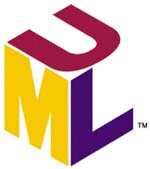16.1 Dividing Large Domains
| Many domains can be quite large, with dozens or even hundreds of classes. Subsystems provide a way to partition a large domain so that people and groups can work with manageable chunks of the problem. Definition: A subsystem is a part of a domain containing classes, relationships, state machines, and their procedures. Figure 16.1 shows how the online bookstore domain can be divided into three subsystems: Product Specification, Ordering, and Shipping. Each subsystem contains a cluster of closely related classes. Figure 16.1. Subsystems and Classes
|
EAN: 2147483647
Pages: 161

